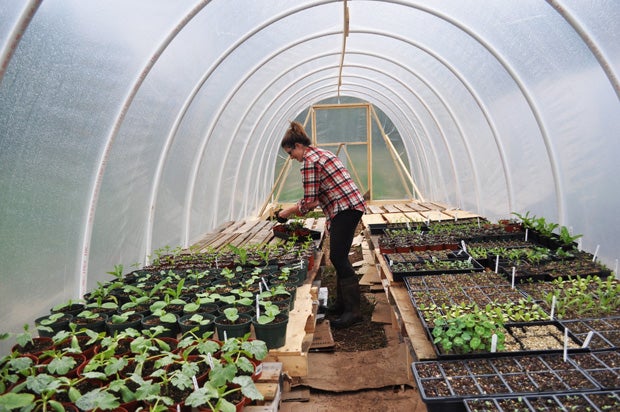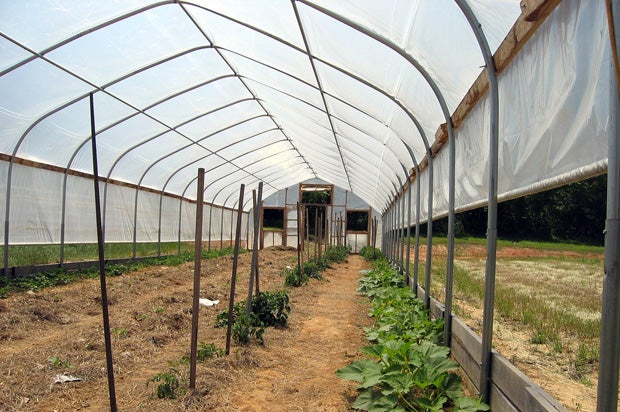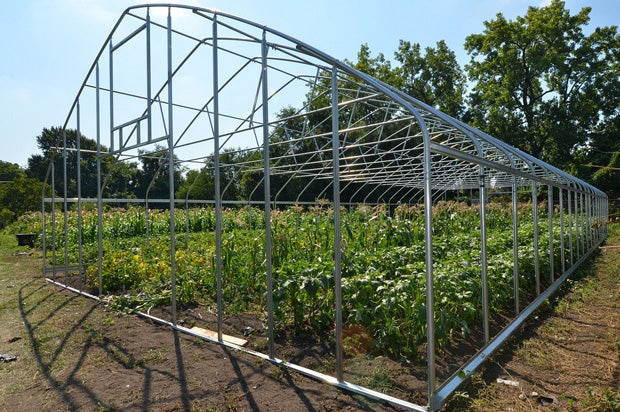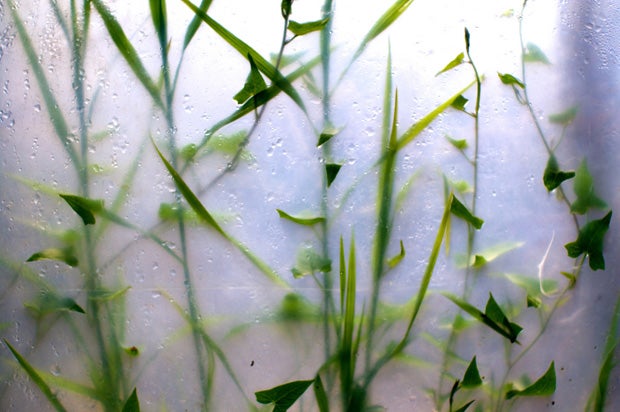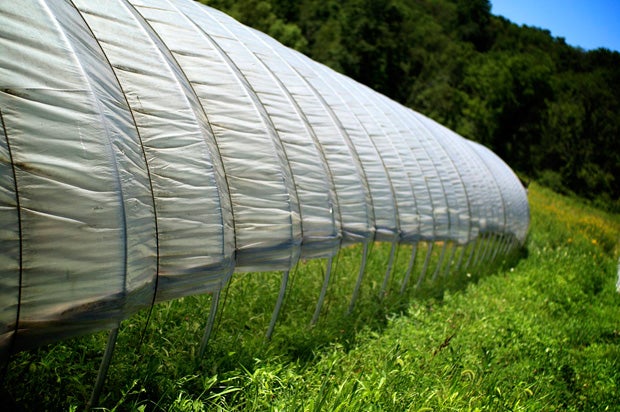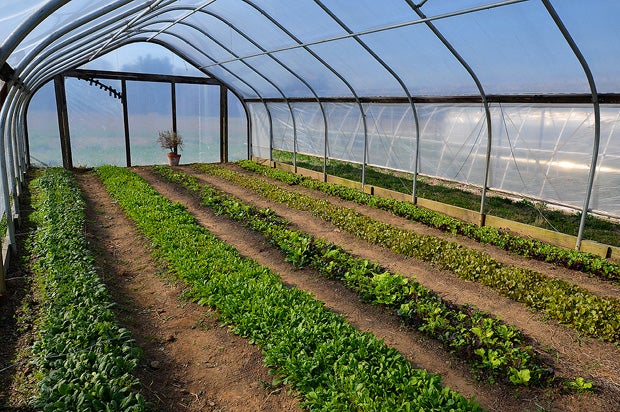How to make compost WITHOUT fall leaves
ListenQuestion of the Week:
You often mention that one of the secrets to making successful compost is to include sufficient “brown” material in the mix, specifically shredded fall leaves. But in the fall, I mow all my leaves and use the shredded leaves as mulch for my shrub and flower borders. As a result, I have little left over to use in my compost pile. I’m hoping you have some suggestions for other sources of brown material. Thank you!
Bonnie in Centreville, Delaware
Get the answer to “How to make compost WITHOUT fall leaves” »
Highlights from show for April 27, 2013:
Chuck’s composting conundrum
Chuck from Steilacoom, Washington has listened to the multiple times that Mike has mentioned the importance of having dry, dead leaves mixed into compost. However, he lives in an area where there are very limited deciduous trees and has a hard time getting leaves for his compost pile, and is concerned that even the leaves he does find would have limited nutrients and beneficial additives for the compost. Fortunately for him, Mike has a few ideas.
Since the soil in Chuck’s area is not the most ideal for organic gardening, Mike recommends creating raised bed gardens and setting up some inexpensive greenhouse-like fixtures called high tunnels over them to retain the heat. “I think if you clear some land, get some sun, install a hobby greenhouse — or, I like these high tunnels, look them up online — you’ll be able to grow all of the crops this summer… Find a good source of high quality compost, fill your raised beds with it, and maybe use some organic fertilizers throughout the year, but in your climate, even with that added heat, your plants will need less nutrition than a plant down in Texas or Southern California or something like that. I think once you concentrate that heat and make a little bit of an artificial environment, you’ll be off to the races and showing off your tomatoes.”
Slideshow below: High tunnels and hoop houses
Grazing is the solution
With a few acres of pasture that has been neglected for over 20 years and overgrown with autumnalis trees, Julie from Northport, Michigan wants to find a way to turn her large plot of land into a plot that her sheep and goats can graze on. According to Mike, Julie’s use for the land may just be the solution to the problem. Sheep and goats oftentimes eat at the re-growth of the trees which would prevent them from sprouting up all over again.
Another idea would be to purchase a weed wrench, which is designed for easy removal of the roots of invasive plants. Mike says, “If it were me, I would chainsaw them down about a foot off the ground in a test area, keep the sheep fenced in there, and see how they do with it. It may just be progressing to different areas which you’re going to want to rotate your pasture anyway… And remember, if it took 20 years for it to get this bad, it is smart to take a couple of years to remediate it.”
Thinning pines
Mike is having trouble figuring out what is wrong with his blue spruce pines. About 6 of the ones in his backyard are thinning at the bottom and have these white splotches on them. Is there a predator in his backyard he doesn’t know about? Mike McGrath doesn’t think so. Evergreens have a tendency to lose branches at the bottom if they are not receiving full sunlight on all sides. Since the yard has a large oak tree blocking off full sunlight to the pines, there is another way to remedy the situation.
“Remove any completely brown branches, remove some stuff low to the ground even if its green to even everything out, scrub that white stuff off, move the lawn back a little bit just think about giving them some air down there, cause they’re not going to get sun, nothing is going to change that, so if you cant give a plant enough sun you give it everything else you can which in this case is going to be airflow and if you want to be the world’s greatest caretaker, after you move that lawn back a little bit, put a 1 inch mulch of compost down on the surface of the soil around the tree starting 6 inches from the trees and going out as far until you get to the lawn,” Mike suggests.
Beneficial banana peels for composting
Avid gardener Jay from Wyncote, PA needs an answer to the long held question about whether banana peels are in fact good for compost piles! The theory behind this belief is that banana peels are loaded with potassium which is great for plants. “The problem is getting them to compost. And the answer to that is, if you wish to incorporate them, they just have to be chopped up, you can’t throw them in whole. I know there’s people who experiment, they buy an old garage sale blender and they try to liquify these kinds of things and then they pour it into the compost pile. I have been told not to overdo citrus in the compost pile because it does contain a lot of naturally occurring, very powerful chemicals.” In moderation, however, banana peels seem to act as a miracle cure for any planting problems, so keep eating those bananas!
Rotating tomatoes
Leigh from Princeton, NJ has a question about rotating her tomatoes in her vertical raised bed garden. Because she only has 16 linear feet, she is unable to change the placement of her tomatoes every year and is noticing yellowing and browning on the lower leaves of the plant. Mike suggests that she try finding a community garden, which are numerous in the Princeton area, or to do a major swapping out of her old soil. Another alternative would be to get tomatoes that have a “VF” on the label which are resistant to verticillium wilt, which Lee is experiencing in the coloring of the leaves, or that she get a hold of grafted tomatoes.
“Verticillium wilt builds up in the soil where tomatoes have been grown year after year. Every year the symptoms get worse until finally this little annoyance of the lower leaves turning yellow turns into plants that die by July or August. It’s heartbreaking.”
Mike McGrath
-
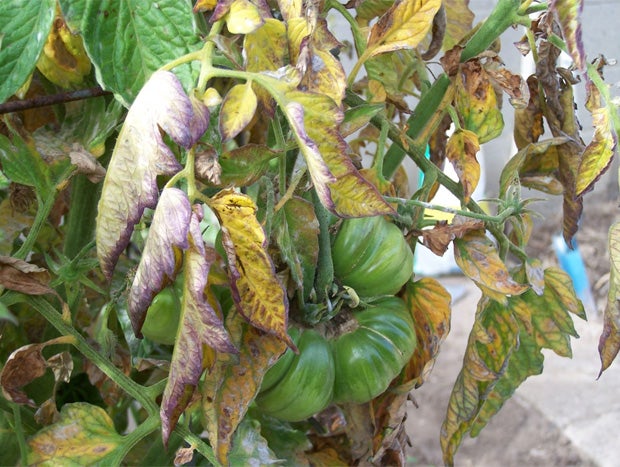
Tomatoes suffering from verticillium wilt. Photo credit: Confessions of a Vegetable Gardener
Cat conflict
Dana from North Philadelphia has a vacant lot that she has been trying to garden in for the past 5 years. The issue most pressing on Dana’s mind is the stray cats sneaking in through the fence and doing their business all around her garden. Mike recommends getting some cheap chicken wire to to wrap around the lower parts of the fence to keep them from squeezing in, as well as making a baffle on top to prevent them from climbing up vertically. Another idea is to clear up a patch up land next to her garden so that the cats will be less attracted to her garden. An important point that Mike brings up is that urban land is often highly contaminated with lead, which can be dangerous if inhaled. He urges her to test her soil with the state and if it is high, to create a solid physical barrier to protect any one that comes near the garden, as well as insist that gardeners wear heavy gloves whenever they are doing any garden work there.
Jeff’s squirrel solution
Jeff from New York State shares in Mike’s “certain kind of love” of squirrels and wants to explain an exciting idea that he came up with to keep them away from his fruit trees. He has created an electric fence of sorts out of copper pipe with wire wrapped around it. It is also connected to a solar powered charger with transmits a shock when it is touched. He’s noticed that squirrels and even deer have been staying away from his dwarf fruit trees ever since. While Mike personally prefers the use of a simple motion activated sprinkler in his yard, he does humorously admit that Jeff is quite the maverick, “You’re living the Warner Brother’s cartoon life! I am, to use a phrase, shocked and in awe. Thanks for sharing, good luck, don’t touch the fence, and don’t be surprised when the squirrels start building little wooden ladders to go over it!”
“You’re living the Warner Brother’s cartoon life! I am shocked and in awe.”
Mike McGrath
— This week’s post was written by Jolie Higazi, You Bet Your Garden Intern
WHYY is your source for fact-based, in-depth journalism and information. As a nonprofit organization, we rely on financial support from readers like you. Please give today.


